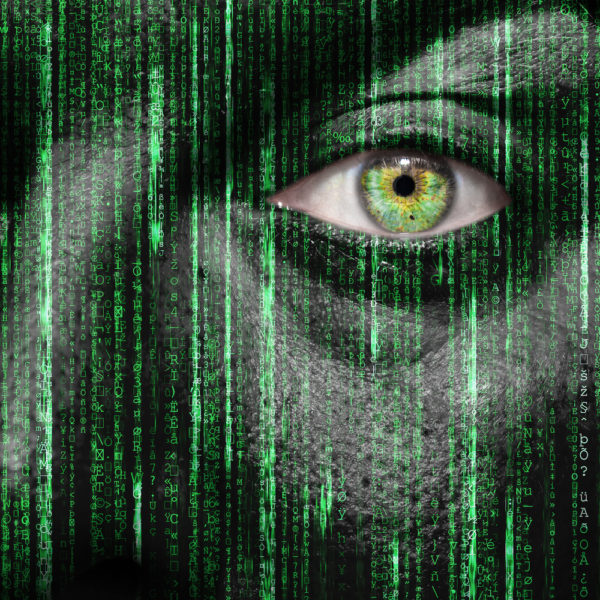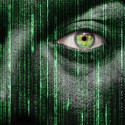
A member of my family was cyber stalked for over a year. One of the reasons I do what I do, is as a result of this attack and other cyber bullying episodes. Due to this episode, myself and my family learned how to protect ourselves online. It led to me writing the “Keeping Kids Safe Online” Manual, and becoming a cyber safety educator to help others stay safer online. Thankfully for our family, the cyber stalker eventually stopped, but it took a concerted effort to maintain our privacy and security and continued vigilance, which continues today.
Sadly for so many others the stalking can go on for years regardless of the efforts they make. Police often can’t track the perpetrator, and the stalker is clever enough to never cross the line where they identify themselves.
As part of my job, I talk about the risks of cyber stalking and the importance of being vigilant about our privacy online and our connections, because anyone…and I mean absolutely anyone can fall prey to a cyber stalker. Over the last few months I’m increasingly being contacted after my talks by people who are victims of cyber stalking and in two recent cases where I was asked for advise, the stalking has been going on for over 5 years. In both cases the police have been unable to track down the stalker, and no matter what the victim does the stalker continues their harassment via phone calls, emails, messages and posts to harass the victim and the victims family and friends.
I believe that this behaviour maybe far more prevalent than we think due to the fact that often the victim is often too embarrassed and frightened to talk about it. Stalking is perceived as a very weird thing, and for the victims there is also a fear that they might be judged to have encouraged it in some way. It’s really is a hidden terror.
How To Protect Yourself From A Cyber Stalker
What To Do
If the stalker is threatening, harassing and stalking you, this behaviour falls into the category of being criminal behaviour, and you may have grounds to go to the police. It is important that you have some tangible evidence of this behaviour for the police to pursue your case.
- Save messages from the stalker on your device, don’t delete.
- Save emails from the stalker.
- Take screen shots of any messages if they are on a forum or online – social media. (Windows – search for the snipping tool in your accessories folder) (Mac Command/Shift/3 or 4) (mobile device press the home and power button together)
- Do not communicate with the stalker, if possible block their profile or phone number. iPhone – Go to phone call history, click the ( i ) icon and scroll down to “block this caller”. Android needs a blocking app. You may have to contact your phone service provider to do so, if they are calling from a hidden number.
- Record any voice messages with your phone, use “Voice Memos” on an iPhone or download a “Voice Memo” app for Android
Take your information and evidence to your local police. You can also report the behaviour to The Australian Cybercrime Online Reporting Network www.acorn.gov.au a new cyber crime reporting website set up by various Australian Government agencies and The Australian Federal Police.
You may also need to:
Hide Your Personal Details:
- Delete any photos of you online.
- Google your name, your phone number and your address and make sure they are not listed anywhere online. Use an identifying description with your name to help narrow search results i.e “Sally Brown” “Brownsville” Ask the administrators of the websites to remove them.
- If you do remove your private information from search engines it will take time for that information to disappear from search. You can apply to have it removed from search history (cached history) Go to this Google link to apply for to have it removed from Google Search.
- Set up a Google Alert for your name or your address and phone number so that if your name and private details are posted to a website you will be notified by Google as to where they are listed. This alert system doesn’t include apps like Facebook or Instagram. It might in some case cover Twitter mentions. Report Twitter Abuse Here: https://support.twitter.com/forms/abusiveuser
- Set up a post office box address, and use that address instead of listing your residential address.
- Make sure any websites you own have privacy settings set up so that your details including your address is hidden (go to your website administrator or registrar to enable). Use your postal address where you can when registering your website. (com.au) addresses do not allow post office box addresses, but you can pay a little extra to hide your identity and address from search engines.
- If you have a website get rid of any phone numbers or email addresses listed. Set up a contact form instead.
- Upload your profile photos from social media to https://images.google.com and see if your profile photo has been uploaded to any websites, so that you can have them removed. (Some clients I have been helping have had fake accounts on social media and dating websites that have set up to harass and embarrass them).
- You may need to either delete your social media accounts or deactivate them. You may need to set up social media accounts with a pseudo name and profile picture that is of an avatar, that doesn’t show your real face. For Facebook go to settings/security scroll down to the bottom of the security page to deactivate, or go to https://www.facebook.com/help/224562897555674/ to find out how to permanently delete your account.
- You also need to ensure that all your message accounts and social media accounts have the very strictest privacy settings on them. This website has many articles on how to do that which you can find using the search bar, or you can purchase my manual which has all the settings for the most popular message apps and social media all in one place with the very latest settings.
- You may have to set up a new phone number if your stalker has your number.
- If you are in the U.S you can also set up a Google Voice number in lieu of a phone number to be used on correspondence or websites. Australia doesn’t have access to Google Voice numbers.
- You may also have to hide your phone number in your phone settings, so that your caller I.D is hidden from calls you make. For iPhone General Settings/Phone/Show My Caller ID switch off. Android find them in Settings and Caller I.D Options or download one of the hide caller ID apps from Google Play Store
Computer And Online Security:
- Make sure your computers are secure with firewalls and password protected screens. Go to System Preferences/Firewall security settings on Mac and Windows Start/Control Panel/Security .
- Ensure you have an up to date anti virus program on your computers. www.sophos.com for Mac and www.kasperskey.com for Windows. Android phones also need anti virus protection, Kaspersky have one.
- Use only secure passwords for all your accounts. Over 8 digits mixed upper and lower case numbers and symbols. Use a password manager like 1Password or LastPass or save your passwords offline and off your computer in a bottom drawer or secure location.
- Contact the “Do Not Call Register” for Australian citizens https://www.donotcall.gov.au/index.cfm to help prevent any marketing calls, so that you can be less worried about calls from unknown numbers.
- If your cyberstalker is someone you once had a close relationship with, a partner or spouse, you will have to change all your passwords and may need to get expert advice in regards to your computer and phone to make sure there is no spyware or tracking device set up to follow you. “Find Your Friends” on iPhone is a location tracker as is “Find My Phone/Computer” “MSpy” is another common spyware app that can track your location and your activity on your device.
- It is important that if you have an iPhone or iPad that you secure your iCloud account, change the password, and enable 2 step verification go to “Manage Your Apple I.D” . If your partner has access to your iCloud account they can watch all your actions on your phone.
- You may also need to change your credit card numbers, change bank account passwords and details.
- Make sure you turn off all Geo Location (tracking) settings for messaging, social media and photo apps on your phone. Only use on maps. On iPhone go to General Settings/Privacy/Location Services IMPORTANT: If you are using Facebook make sure you turn off location on Facebook AND Facebook Messenger. On Android you have to go to settings and disable location services as there is no individual app settings to switch off.
- You may need to create a new email address and disable your old ones, remove the old ones from your computers mail system and all your devices.
- Be vigilant about not clicking any links in emails or clicking attachments without checking with the person that apparently sent it, that it is actually from them. Go to your accounts via your bookmarks or website address you already know.
- Set up a private dropbox to share any photos or documents, or set up a Google Group rather than having people email you documents or attachments.
- Make sure you hide your friends list on Facebook and set your “Who Can Contact Me” settings in Privacy to Strict Filtering settings. See my Advanced Privacy Settings For Facebook for 2015 and set up every settings to “Only Me” or “Friends” More about Facebook Messenger Privacy Here: https://thecybersafetylady.com.au/2014/08/new-facebook-messenger-privacy-settings/
- The most secure messaging app is either Skype or Apples iMessage as long as you keep your user name and email associated with iMessage very private, and set the privacy settings. (My manual and this website have the privacy settings) iMessage has encrypted messaging as does Wikr another very private messaging app. If using Skype, don’t set up an account using your real name, make up a user name so that you can’t be searched easily for your Skype profile.
- Make sure you enable two step verification or login verifications on every account that allows it. This helps prevent your most important accounts from being hacked. Including iCloud, Facebook, Google, Twitter and more.
You may need to employ a professional to help you set up all the security you need. Most people don’t know what they need to disable or enable and only find out when their security is breeched.
More Information from these Websites:
- http://womensissues.about.com/od/violenceagainstwomen/a/CyberstalkingFS.htm
- http://stalkerbegone.com/cyberstalking-resources/
- This website has a great list of links to various platforms where you can report cyber bullying. http://cyberbullying.us/report
- Easy to understand legal advice including advice on Cyber Stalking and Cyber Bullying State by State http://www.lawstuff.org.au
- Australian Government Cyber Stalking Resources Including Laws. http://aic.gov.au/crime_types/cybercrime/onlinevictimisation/cyberstalking.html
- Domestic Violence Resource Centre Victoria: http://www.dvrcv.org.au/help-advice/cyber-stalking-and-harassment
- Report Cyber Bullying or Cyber Stalking Here: http://www.acorn.gov.au/what-is-cybercrime/cyber-bullying/
- Cyber Bullying/Stalking Statistics: http://aic.gov.au/publications/current%20series/rip/1-10/09.html
- Contact the Office of the eSafety Commission to report stalking and harassment http://www.esafety.gov.au
Leonie Presents Cyber Safety Talks for schools, business, and community groups.


